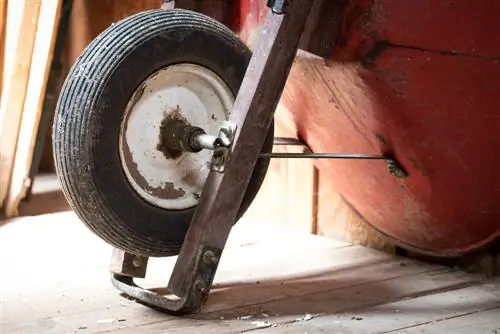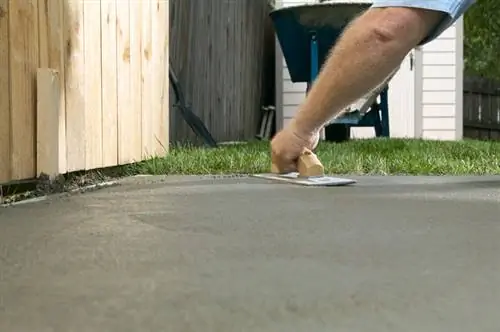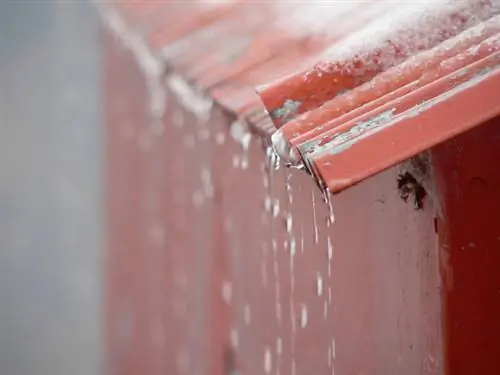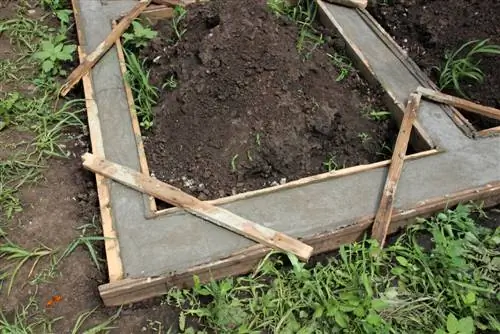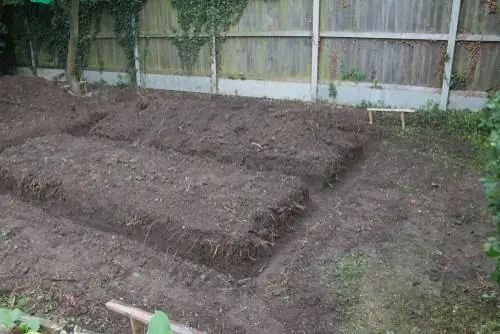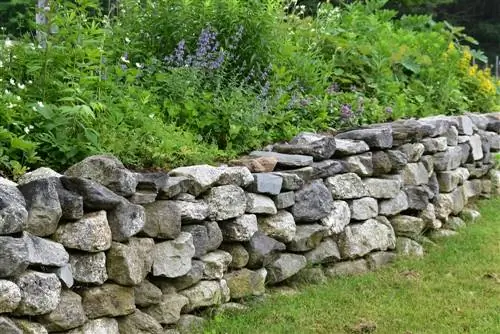- Author admin [email protected].
- Public 2023-12-16 16:46.
- Last modified 2025-01-23 11:21.
Garden houses are incredibly practical because they keep the garden tidy and often serve as a cozy second living room. However, many models offered in stores do not have a base as standard. In this case, a foundation and/or additional floor covering ensure insulation from the ground and create a homely atmosphere.

What can I do if my garden house has no floor?
A garden house without a floor requires a foundation and suitable flooring to ensure stability and create a pleasant atmosphere. Possibilities for foundations include slab foundations, point foundations or strip foundations. Wood, PVC or tiles are suitable as floor coverings, depending on the use and appearance of the garden house.
The necessary base for a small tool shed
A solid, flat base plate is recommended here. This consists of a layer of gravel and a layer of sand on which concrete slabs are laid. This is very quick, poses no problem even for laypeople and is usually cheaper than a concrete foundation.
Larger arbors require a stable base
For greater stability, larger garden houses should always be built on a frost-proof concrete foundation. There are different types available here:
- Slab foundation
- Point foundation
- Ring foundation
- Strip foundation.
The effort is higher, but the thorough preparation pays off. The house stands stable for many years and no moisture can penetrate from the underground.
The floor
The floor covering is based on the future use of the house:
- In a tool shed that is often entered with wet and dirty shoes, it must first and foremost be robust.
- If heavy equipment is stored in the garden house, the load capacity is also important.
- If the arbor serves as a second living room in which you can also relax and read or celebrate, a visually attractive floor covering creates a homely atmosphere. So that you don't get cold feet, you should additionally insulate the floor.
Which materials are suitable?
Wood:
In a wooden garden house, laying wooden floor coverings is obvious. A good foundation is important in this case so that moisture from the subsurface, which can lead to mold, cannot penetrate into the floor. A matching design on the walls and floor is visually very appealing.
PVC:
PVC is easy to install, easy to maintain and inexpensive. This floor covering is ideal for versatile use of the arbor. PVC requires a stable substructure, for example made of OSB panels (€23.00 on Amazon). However, it is not suitable as a sole covering because the airtight plastic promotes mold formation.
Tiles:
Easy-care and robust tiles are available in a variety of versions. They create a cozy and visually very appealing overall impression. In the frost-proof version, they are even suitable for uncovered patio areas. However, tiles require a solid, professionally manufactured surface.
Tip
If you plan to have a wooden floor, you can safely use old paving slabs for the foundation. Since these are covered and are no longer visible, the costs for new panels can be saved.

